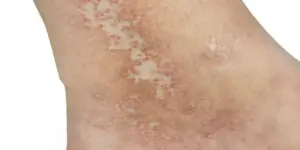
At Allure Medical, we work hard to help our patients not only treat, but fight, varicose veins every single day.
We firmly believe in the power of education—that by helping people better understand what varicose veins are and what causes them, we can help them live a happier and healthier life. Here is our latest article discussing how varicose veins and diabetes are related…
What Are Varicose Veins, Really?
For those of you who’ve never heard of varicose veins or aren’t familiar with them, we invite you to read one of our previous articles on the subject (like this one).
But if you’d rather not revisit our previously published content, we’ll just give you a quick run down…
Varicose veins are veins that swell and enlarge due to faulty valves within the veins themselves. As the veins grow, they bulge and become visible underneath the skin with a dark blue or purple hue.
The veins most frequently occur in the legs (look for them on the back of your calves, knees, and thighs) and can be accompanied by swelling, itching, aching, or a feeling of “heaviness”.
The Relationship Between Varicose Veins and Diabetes
People with diabetes are more susceptible to developing varicose veins. This is especially true for those with Type 1 diabetes because the lack of insulin that causes it leads to hyperglycemia which, in turn, triggers excessive weight gain—one of the leading contributors to varicose veins.
But more concerning than hyperglycemia is the fact diabetes can retard circulation in the extremities. When circulation slows, the veins of the extremities (especially the legs which have to work even harder against gravity) struggle to carry oxygen-depleted blood back to the heart. The less efficient the veins are at bringing blood back to the heart, the more blood is allowed to pool, stretch, and—ultimately—weaken the vein walls which increases the likelihood of varicose vein formation.
Eventually, vein walls can weaken to the point where they cause extreme pain, cause dangerous clots, or even rupture, at which point treatment for varicose veins becomes less of an elective procedure and more of a necessary one.

Treating Varicose Veins for Diabetics
If you’re someone who suffers from diabetes and varicose veins, there are many treatment options available.
The least invasive option involves improved exercise in the form of stretching, the application of certain creams, the use of clothing that improves circulation, and a low-sodium, low-alcohol diet.
If those initial, non-invasive solutions don’t yield the desired results, there are other more “involved”, treatments like Endovenous Laser Ablation Therapy, which permanently removes varicose veins by shrinking and collapsing them from view using a laser-fiber catheter.
If you’d like to learn more about varicose veins or the best ways to treat them, visit our vein page or read one of Dr. Charles Mok’s latest books.
In Health,
Shana Loggins










